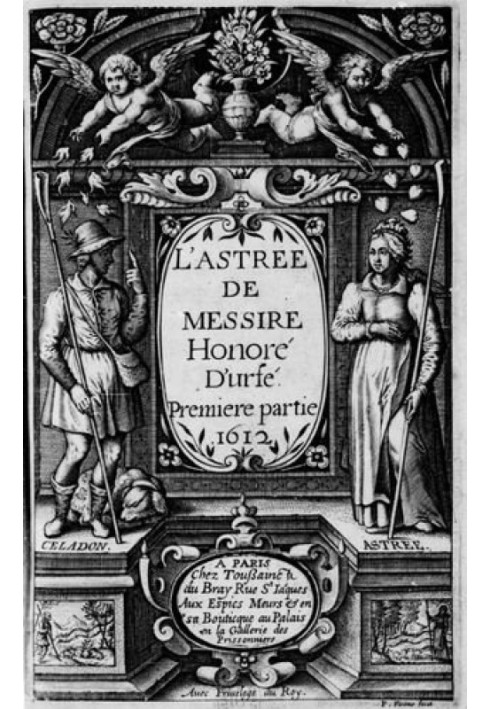Astraea (fragments)
 Instant download
Instant download
after payment (24/7)
 Wide range of formats
Wide range of formats
(for all gadgets)
 Full book
Full book
(including for Apple and Android)
Honoré d'Urfe (1567-1625) entered the history of literature as the author of one of the most popular works of his era, important for the formation of the genre of the European novel of the 17th century - “Astrea”. Separate books of this novel were published from 1607 to 1627: the fourth part was not completely completed and was only partially published during the author’s lifetime; it, as well as the last, fifth part of the work, was completed and published by the writer’s secretary. The novel incorporates a wide range of pastoral and romantic traditions: to name only the most important sources, these are the ancient novel of Long and Heliodorus, the bucolic poetry of Virgil, “Arcadia” by Sannazzaro, “Diana” by Montemayor, “Galatea” by Cervantes, the tragicomedy of Guarini “The Faithful Shepherd” . In turn, d'Urfe's novel itself lays the foundations of the literary tradition of the New Age: various tragicomedies were created based on its plot, novelists imitated it, or it became the object of their parody, but moreover, the heroes of the novel were imitated in life, it influenced morals, “refined sensitivity, developed imagination” (Bertiere S., Vidal S. Anthologie de la litterature française. XVII siècle. P. 1993. P. 51). The huge role of “Astraea” in the development of love-psychological prose of the New Age is today recognized both by specialists in literature of the 17th century and by theorists of the genre. The work was not republished in France for a long time: between the publication of the novel in 1731 and the publication of the early twentieth century. (1925-1928) the gap is quite significant. In the 20th century, Astraea was published in French four times: twice in excerpts (1935, 1984), twice in its entirety, in Lyon and Paris in the 1920s. and, reprinting a turn-of-the-century edition, in Geneva in 1966; but even the novel was included in the philological university curriculum only in the 1980s. This was largely facilitated by interest in Baroque literature, which clearly increased in literary scholarship in the second half of the last century, as well as new works of literary theorists who drew attention to the innovative features of the poetics of the Baroque novel in general and “Astrea” in particular. The need for a closer acquaintance with the text of D’Urfe’s pastoral is also keenly felt by domestic philologists.
Data sheet
- Name of the Author
- Оноре Д'Юрфе
- Language
- Russian
- Translator
- Наталья Тиграновна Пахсарьян












